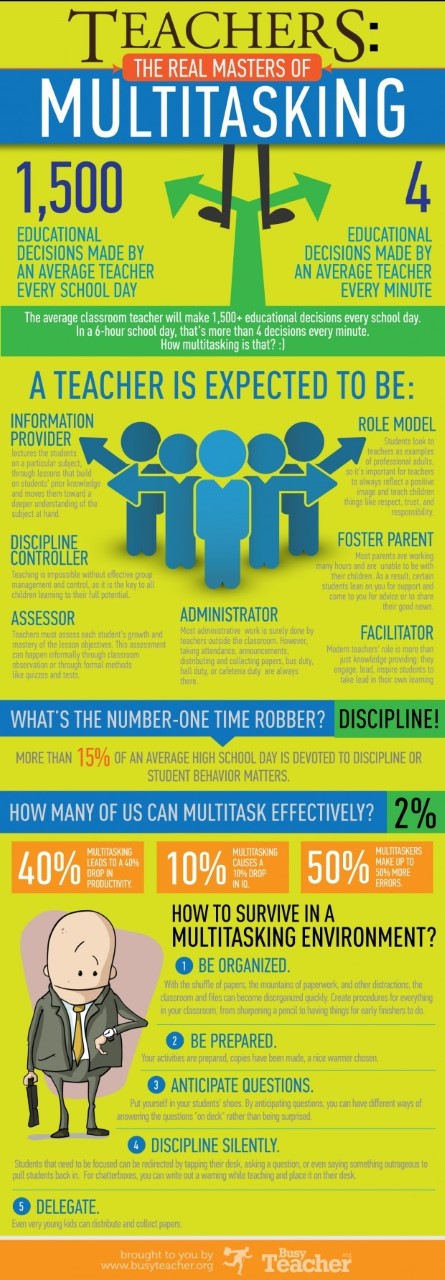
It takes a certain kind of hypocrite to be a charter school champion.
You have to deny any wrongdoing one minute. And then admit you’re guilty but explain it away with the excuse “Everyone’s doing it!” the next.
Take cherry picking – one of the most common admonishments leveled against the school privatization industry.
Detractors claim that charter schools keep enrollment low and then out of those who apply, they pick and choose which students to accept.
Charters are run by private enterprise but funded with public tax dollars. So they are supposed to accept all comers just like the authentic public schools in the same neighborhoods.
But charter schools don’t have to follow the same rules as authentic public schools. They pretty much just have to abide by whatever was agreed upon in their charter contracts. Even then states rarely check up on them to make sure they’re in compliance.
So critics say many of these institutions are circumventing enrollment procedures. They’re welcoming the easiest kids to teach and dissuading others from enrolling – even to the extent of kicking out hard to teach children or pretending that an “unbiased” selection process just so happened to pick only the most motivated students.
Charter school supporters usually respond to this critique in one of two ways.
(1) Cherry picking!? How dare you!? We don’t cherry pick students! The demand to get in to our schools is so great that we put all the names in a hat and let chance decide!
Or
(2) Cherry picking!? Why of course we cherry pick students! But so do the public schools with their discipline policies and magnet schools!
You’d think these folks would suffer from some cognitive dissonance. Imagine if the Oscar Mayer company claimed that their hot dogs don’t contain any rat feces only to backtrack a minute later saying that their wieners have no more rat feces than the leading competitor’s franks.
And make no mistake – the charter school response is very much like a hot dog company’s damage control – a corporate press release written by various billionaire-funded think tanks to protect the industry’s market share.
It’s like a spoiled child saying, “I didn’t do it! And even if I did do it, there’s nothing wrong with it!”
Thankfully, there are these pesky things called facts that show both responses to be… well.. baloney!
Let’s take a look at each and examine why they’re wrong.
In Part 1, we’ll focus on the first excuse that charters don’t cherry pick students. In Part 2, we’ll look at the excuse that it’s okay for charters to cherry pick students because the authentic public schools do the same.
THE “I DIDN’T DO IT!” EXCUSE
Short answer: There is plenty of evidence that shows you did.
Long Answer:
Selecting the students you want to teach instead of families selecting the school they want their kids to attend is sometimes called cherry picking or creaming, and it comes in at least three varieties.
(1) Charter schools do things to encourage only the most motivated families to apply and discourage anyone else. This can involve long applications that may deter uneducated, non English-speaking and/or immigrant parents.
(2) Charter schools literally handpick students with higher test scores and sterling academic records.
(3) Charter schools “counsel out” or expel difficult students during the school year.
TYPE 1: APPLICATION SCHENANIGANS
The international news organization Reuters found evidence of the first type to be widespread at U.S. charter schools.
Reuters documented the following:
-
“Applications that are made available just a few hours a year.
- Lengthy application forms, often printed only in English, that require student and parent essays, report cards, test scores, disciplinary records, teacher recommendations and medical records.
- Demands that students present Social Security cards and birth certificates for their applications to be considered, even though such documents cannot be required under federal law.
- Mandatory family interviews.
-
Requirements that applicants document any disabilities or special needs. The U.S. Department of Education considers this practice illegal on the college level but has not addressed the issue for K-12 schools.”
For a specific example, take a look at the online application form for 2016-17 at Roseland Accelerated Middle School, a charter school in Santa Rosa, California.
Applicants must fill out several dozen pages before a student is accepted, according to the website.
Students must write five essays that are each two pages in length using complete sentences covering a variety of topics including family background. One essay even asks applicants to write an essay beginning with “The qualities and strengths that I will bring to school are… .”
But that’s not all. Parents have to write seven small essays of their own and fill out their child’s medical history including medications the child takes (which some critics say violates federal privacy law).
Finally, students must write a minimum three-page autobiography, typed, double spaced and “well constructed with varied structure.”
This is all required BEFORE applicants are accepted to the school – a taxpayer funded school, by the way, that is supposed to accept everyone who applies unless too many enroll. Then the school is supposed to use a lottery to determine who gets in.
Funny how the lottery winners always seem to be those with the best essays and the lowest academic, psychological or medical needs.
Of course, that’s just one school.
The Southern California chapter of the American Civil Liberties Union (ACLU) along with Public Advocates looked at the application policies of 1,000 of the state’s 1,200 charter schools.
A quarter of them (including Roseland) had policies in violation of state law that could exclude some types of students. In particular, these charters are selecting against children from families with lower incomes or poorer English skills by requiring parents to volunteer, demanding students’ academic histories and/or failing to provide services for special-education students.
It should be obvious why this is unfair.
No family should have to do more to apply for a K-12 school than would be expected at a private college or university. We should not allow schools that are funded with public tax dollars to select against low-income students and families or foster children. No family should be forced to disclose their child’s medical histories as a prerequisite for enrollment so that school administrators could decide if asthma or a leukemia diagnosis makes the child a bad academic bet. No family should have to divulge members’ immigration status, religion or culture to apply to a school. Frankly, this is not the school’s business. No parent should have to volunteer on campus. Low income parents work two or more jobs, have younger children at home or just don’t have the time. And when you require parents to write essays, too, you’re really just trying to gauge family literacy and the ease of educating the student applicant.
TYPE 2 AND 3: HANDPICKING STUDENTS AND COUNSELING OUT
The good thing about the first type of selective enrollment is that you can see it on school applications which are free and open to the public.
The problem with proving the other two types of cherry picking is the lack of transparency at most charter schools.
Charter schools are notoriously tight lipped about what happens behind their closed doors. Unlike authentic public schools that have several monthly open meetings, open documents, and frequent state audits, charter schools don’t have to share hardly any of this with the public – even though we pay for their school.
The public is not allowed into the room where charter operators pick and choose students because of test scores or academics. Nor are many people allowed into private meetings with students and parents where children are highly encouraged to seek their education elsewhere or even given the boot.
However, there have been numerous studies that show this happens.
To be fair, there are competing studies that show it doesn’t happen. However, those studies are often paid for by the very industry under investigation. Their funding is predicated on finding a certain result and – GASP! – that’s what they usually end up finding.
It’s like the National Apple Institute funding a study that concludes “Pears suck.” It’s not a real study. It’s an advertisement.
The studies that DO show evidence of the second and third type of cherry picking, though, are independent and peer reviewed.
Here are a few results:
-Vasquez Heilig, J., Williams, A., McNeil, L & Lee, C. (2011). Is choice a panacea? An analysis of black secondary student attrition from KIPP, other private charters and urban districts. Berkeley Review of Education, 2(2), 153-178.
This paper concludes that charter school dropout rates – especially for black children – are much higher than at authentic public schools in Texas. In particular, KIPP charter schools claim that 88-90% of their students go on to college. The evidence does not support this claim. In fact, even though KIPP does spend 30-60% more per student, it still has a higher dropout rate and a higher rate for students transferring to other schools. Moreover, Texas charter schools were found to serve fewer black children than authentic public schools.
-Vasquez Heilig, J., LeClair, A. V., Redd, L., & Ward, D. (in press). Separate and Unequal?: The Problematic Segregation of Special Populations in Charter Schools Relative to Traditional Public Schools. Stanford Law & Policy Review, XX(X), XXX-XXX.
An analysis of charter schools in large metropolitan areas finds that authentic public schools have much greater rates of high needs students than charter schools in the same areas.
-Frankenberg, E., Siegel-Hawley, G., & Wang, J. (2011, January). Choice without equity: Charter school segregation. Education Policy Analysis Archives, 19(1). Retrieved from http://epaa.asu.edu/ojs/article/view/779/878
An examination of charter schools in 40 states and the District of Columbia found widespread evidence that charter schools are much more segregated by race and class than authentic public schools.
In particular:
“This analysis of recent data [2007-08] finds that charter schools are more racially isolated than traditional public schools in virtually every state and large metropolitan area in the nation. In some regions, white students are over-represented in charter schools while in other charter schools, minority students have little exposure to white students. Data about the extent to which charter schools serve low-income and English learner students is incomplete, but suggest that a substantial share of charter schools may not enroll such students.”
-Garcia, D. R. (2008). Academic and racial segregation in charter schools: Do parents sort students into specialized charter schools? Education and Urban Society, 40(5), 590- 612. doi: 10.1177/0013124508316044
This study found little evidence that charter schools were more segregated because of parental choice. “…parents enroll their students into charter schools with at least the same degree of academic integration as the district schools that students exited.” The segregation found at charter schools is due to some other source.
-Lacireno-Paquet, N., Holyoke, T. T., Moser, M., & Henig, J. R. (2002). Creaming versus cropping: Charter school enrollment practices in response to market incentives. Educational Evaluation and Policy Analysis, 24(2), 145-158. doi: 10.3102/01623737024002145
School choice makes disparities of race and class worse – not better – by selecting the easiest to teach in enrollment.
In particular:
“…competition for students will pressure individual schools into targeting students with the highest performance and the least encumbered with personal and social disadvantages. We suggest that some charter schools, by background and affiliation, are likely to be more market-oriented in their behavior than others, and test the proposition that market-oriented charter schools engage in cream-skimming…”
Market-based charter schools are not serving high needs students. They are “…skimming the cream off the top of the potential student population, [and] market-oriented charter schools may be “cropping off” service to students whose language or special education needs make them more costly to educate.”
–Positioning Charter Schools in Los Angeles: Diversity of Form and Homogeneity of Effects. Douglas Lee Lauen, Bruce Fuller and Luke Dauter American Journal of Education Vol. 121, No. 2 (February 2015), pp. 213-239
This study finds:
“Charter school students were less likely to be Black, Latino, LEP, special education, and low income and were more likely to be White, academically gifted, high achieving, and have more highly educated parents. For example, about 12 percent of the parents of traditional public school students attained a college degree or higher, compared with 35 percent of the parents of charter school students.”
Researchers also concluded that despite serving more advantaged students, Los Angeles charter schools did not have much effect on student test scores.
In fact:
“We report no statistically significant positive effects of attending a charter school on achievement growth. For the first three cohorts studied, charter school effects on test score growth were negative and significant. For the last cohort studied, the effect was negative, but not statistically significant.”
-Government Accountability Office. (2012). Charter schools: Additional federal attention needed to help protect access for students with disabilities. Washington, DC: Author. http://www.gao.gov/products/GAO-12-543
This study found that charter schools enrolled a lower percentage of students with disabilities than traditional public schools.
In particular:
“In school year 2009-2010, which was the most recent data available at the time of our review, approximately 11 percent of students enrolled in traditional public schools were students with disabilities compared to about 8 percent of students enrolled in charter schools.
“GAO also found that, relative to traditional public schools, the proportion of charter schools that enrolled high percentages of students with disabilities was lower overall. Specifically, students with disabilities represented 8 to 12 percent of all students at 23 percent of charter schools compared to 34 percent of traditional public schools.”
Researchers could not prove a reason for this discrepancy but they did consider that “…some charter schools may be discouraging students with disabilities from enrolling.”
-Jabbar, H. (2015). Every Kid is Money: Market-like competition and school leader strategies in New Orleans. Educational Evaluation and Policy Analysis. http://epa.sagepub.com/content/early/2015/04/27/0162373715577447.abstract
“This study examines how choice creates school-level actions using qualitative data from 30 schools in New Orleans. Findings suggest that school leaders did experience market pressures… [and some] …engaged in marketing or cream skimming.”
-Hirji, R. (2014). Are Charter Schools Upholding Student Rights? American Bar Association. Available online at http://apps.americanbar.org/litigation/committees/childrights/content/articles/winter2014-0114-charter-schools-upholding-student-rights.htm
The study concluded:
“The structures that allow charter schools to exist are marked by the absence of protections that are traditionally guaranteed by public education, protections that only become apparent and necessary when families and students begin to face a denial of what they were initially promised to be their right. [Charter operators] may encourage charter schools to push certain students out and make it easier to deny them the benefits of a publicly supported education. The perception that charter schools are open to all students is being called into question by increasing evidence that children who are disadvantaged by a disability, poverty, or being a member of a minority group, or who have been accused of an offense, may not have the same access to charter schools as those [who] are not.”
-Taylor, J., Cregor, M., & Lane, P. (2014). Not Measuring Up: Massachusetts’ Students of Color and Students with Disabilities Receive Disproportionate Discipline, Especially in Charter Schools. Lawyers Committee For Civil Rights and Economic Justice. Available at: http://lawyerscom.org/wp-content/uploads/2014/11/Not-Measuring-up_-The-State-of-School-Discipline-in-Massachusetts.pdf
“…A significant number of charter schools, particularly those in the Boston area, had high discipline rates. Roxbury Preparatory Charter suspended 6 out of every 10 students out-of-school at least once… all for non-violent, non-criminal, non-drug offenses– for each suspended student.”
Civil Rights complaints and documents from the Katrina Truth (Education) page may be accessed here: http://www.katrinatruth.org/pages/education.html
“Accountability for what’s happening in New Orleans schools has been sorely lacking. While 92% of students are now enrolled in charters, many charter schools have failed to accommodate students with disabilities or limited English proficiency, violating federal law and prompting civil rights complaints to federal agencies. Making matters worse, students enrolled in New Orleans charters are subject to harsher charter-specific discipline policies aimed at pushing out even more students. Suspension rates at New Orleans charters, especially for out-of-school suspensions, are among some of the worst in the nation, with several schools above Louisiana’s already high statewide average and a select group at “rates of 40, 50, 60% and more each year.”
There is much more in comprehensive reports like Pushed Out: Harsh Discipline in Louisiana Schools Denies The Right to Education.
-Henig, J. R., & MacDonald, J. A. (2002). Locational decisions of charter schools: Probing the market metaphor. Social Science Quarterly, 83(4), 962–980. doi:10.1111/1540-6237.00126
The study examined why charters chose to locate in the District of Columbia (D.C.).
Researchers concluded:
“Charters are more likely to locate in areas with high proportions of African–American and Hispanic residents than in the predominantly white neighborhoods, and more likely to locate in neighborhoods with middle incomes and high home ownership than in either poor or wealthy areas of the city. This is especially true of those operated by for–profits…”
-Jennings, J. (2010). School choice or schools’ choice?: Managing in an era of accountability. Sociology of Education, 83(3), 227–247.
Looking at New York City charter high schools, researchers concluded:
“Although district policy did not allow principals to select students based on their performance, two of the three schools in this study circumvented these rules to recruit and retain a population that would meet local accountability targets.”
-Corcoran, S. & Jennings, 2015. The Gender Gap in Charter School Enrollment. 2015. NCSPE. http://www.ncspe.org/readrel.php?set=pub&cat=287
“Though many studies have investigated the extent to which the racial, socioeconomic, and academic composition of charter schools differs from traditional schools, no studies have examined whether charters enroll and/or retain a higher fraction of girls.
“…Analyzing enrollment data for all charter and public schools from 1999-00 through 2006-07, we find that charters enroll a significantly higher fraction of girls, an imbalance that is largest in the secondary grades, and has grown steadily each year.”
“…While attrition from charter schools is higher in all grades than from traditional schools, we find that boys are only slightly more likely to exit charter schools once enrolled. This suggests that much of the gender enrollment gap occurs at intake.”
VERDICT ON CHERRY PICKING
This really just scratches the surface. There are hundreds of more peer-reviewed studies and reputable news articles documenting that the second and third type of cherry picking takes place at many charter schools.
This is a problem even for charters that don’t engage in this practice because the laws governing the industry allow for selective enrollment.
Even charters that don’t cherry pick today could do so tomorrow and there’s nothing we could do about it.
Allowing schools that are publicly financed the freedom to pick whichever students they want to educate is like giving a match to an unsupervised child. It’s only a matter of time before something catches on fire.
In Part 2, we’ll examine the second excuse charter school advocates proclaim when confronted with the evidence above. Namely, that cherry picking students is okay since the authentic public schools do it, too.
NOTE: This article owes a debt to the research of Julian Vasquez Heilig whose Cloaking Inequality Website is an essential resource in the fight for equity in our schools.
Like this post? I’ve written a book, “Gadfly on the Wall: A Public School Teacher Speaks Out on Racism and Reform,” now available from Garn Press. Ten percent of the proceeds go to the Badass Teachers Association. Check it out!









